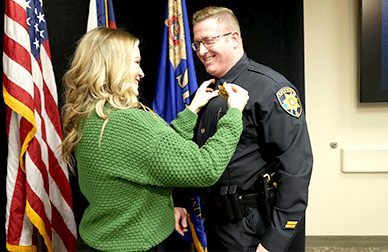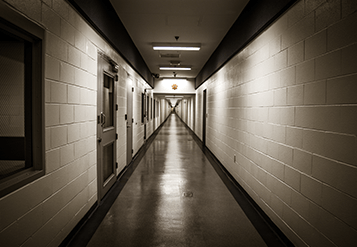Pets and Disaster
You never know when a natural disaster will strike, so plan ahead for the sake of your pets.
If it’s not safe for you to stay in the disaster area, it’s not safe for your pets. If your house is damaged, they could escape and become lost. Even if you think you’ll be gone for a few hours, take your animals. Once you leave your home, you don’t know how long you’ll be kept out of the area, and you may not be able to go back for your pets.
Leave early—don’t wait for a mandatory evacuation order. If you wait to be evacuated by emergency officials, you may be told to leave your pets behind.
If your family and pets must wait out a storm or other disaster at home, identify a safe area of your home where you can stay together. Keep dogs on leashes and cats in carriers, and make sure they are wearing identification. Have any medications and a supply of pet food and water inside watertight containers, along with your other emergency supplies.
Call to confirm emergency shelter arrangements for you and your pets. Bring pets into the house and confine them so you can leave with them quickly if necessary. Make sure each pet and pet carrier has up-to-date identification and contact information. Include information about your temporary shelter location. Make sure your disaster supplies are ready to go, including your pet disaster kit.
An evacuation order may come when you’re out of the house. Make arrangements in advance for a trusted neighbor to take your pets and meet you at a specified location. Be sure that the person is comfortable with your pets, knows where your animals are likely to be, knows where your disaster supplies are kept, and has a key to your home. If you use a pet-sitting service, it may be able to help, but discuss the possibility in advance.
Planning and preparation will help you weather the disaster, but afterward, your home may be a very different place. Don’t allow your pets to roam loose. Familiar landmarks and smells might be gone, and your pet will probably be disoriented. Pets can easily get lost, hurt or killed.
Your pets should be wearing up-to-date identification at all times. It’s a good idea to include the phone number of a friend or relative outside your immediate area.
Evacuation shelters generally don’t accept pets, except for service animals. So, plan ahead to find a place for your pets to stay.
Contact hotels and motels outside your immediate area to check policies on accepting pets. Ask about any restrictions on number, size, and species. Ask if “no pet” policies would be waived in an emergency. Make a list of pet-friendly places and keep it handy. Call ahead for a reservation as soon as you think you might have to leave your home.
Check with friends, relatives, or others outside your immediate area. Ask if they would be able to shelter you and your animals or just your animals, if necessary. If you have more than one pet, you may have to be prepared to house them separately.
Make a list of boarding facilities and veterinary offices that might be able to shelter animals in emergencies; include 24-hour telephone numbers. Ask your local animal shelter if it provides foster care or shelter for pets in an emergency. This should be your last resort, as shelters have limited resources and are likely to be stretched to their limits during an emergency.
Prepare supplies for your pet. Stock up on nonperishables ahead of time, add perishable items at the last minute, and have everything ready to go in a moment’s notice. Keep everything accessible and stored in sturdy containers that can be carried easily.
In Your Disaster Kit:
- Medications and medical records stored in a waterproof container.
- Pet first aid kit and first aid book.
- Sturdy leashes, harnesses and carriers to transport pets safely.
- Current photos and descriptions of your pets.
- Food and water for at least three days for each pet. Food and water bowls, cat litter and litter box and a manual can opener are also good ideas.
- Information on feeding schedules, medical conditions, behavior problems, and the name and number of your veterinarian in case you have to board your pets or place them in foster care.
- Pet beds and toys.
Birds should be transported in a secure travel cage or carrier. In cold weather, wrap a blanket over the carrier and warm it up before placing birds inside. During warm weather, carry a plant mister to mist the birds feathers periodically. Do not put water inside the carrier during transportation. Provide a few slices of fresh fruit and vegetables with high water content. Have a photo for identification and leg bands. If the carrier does not have a perch, line it with paper towels and change them frequently. Try to keep the carrier in a quiet area. Do not let the birds out of the cage or carrier.
Reptiles
Snakes can be transported in a pillowcase but they must be transferred to a more secure housing when they reach the evacuation site. If your snakes require frequent feedings, carry food with you. Take a water bowl large enough for soaking as well as a heating pad. When transporting lizards, follow the same directions as for birds.
Pocket Pets
Small mammals (hamsters, gerbils, etc.) should be transported in secure carriers suitable for maintaining the animals while sheltered. Take bedding materials, food, bowls, and water bottles.




